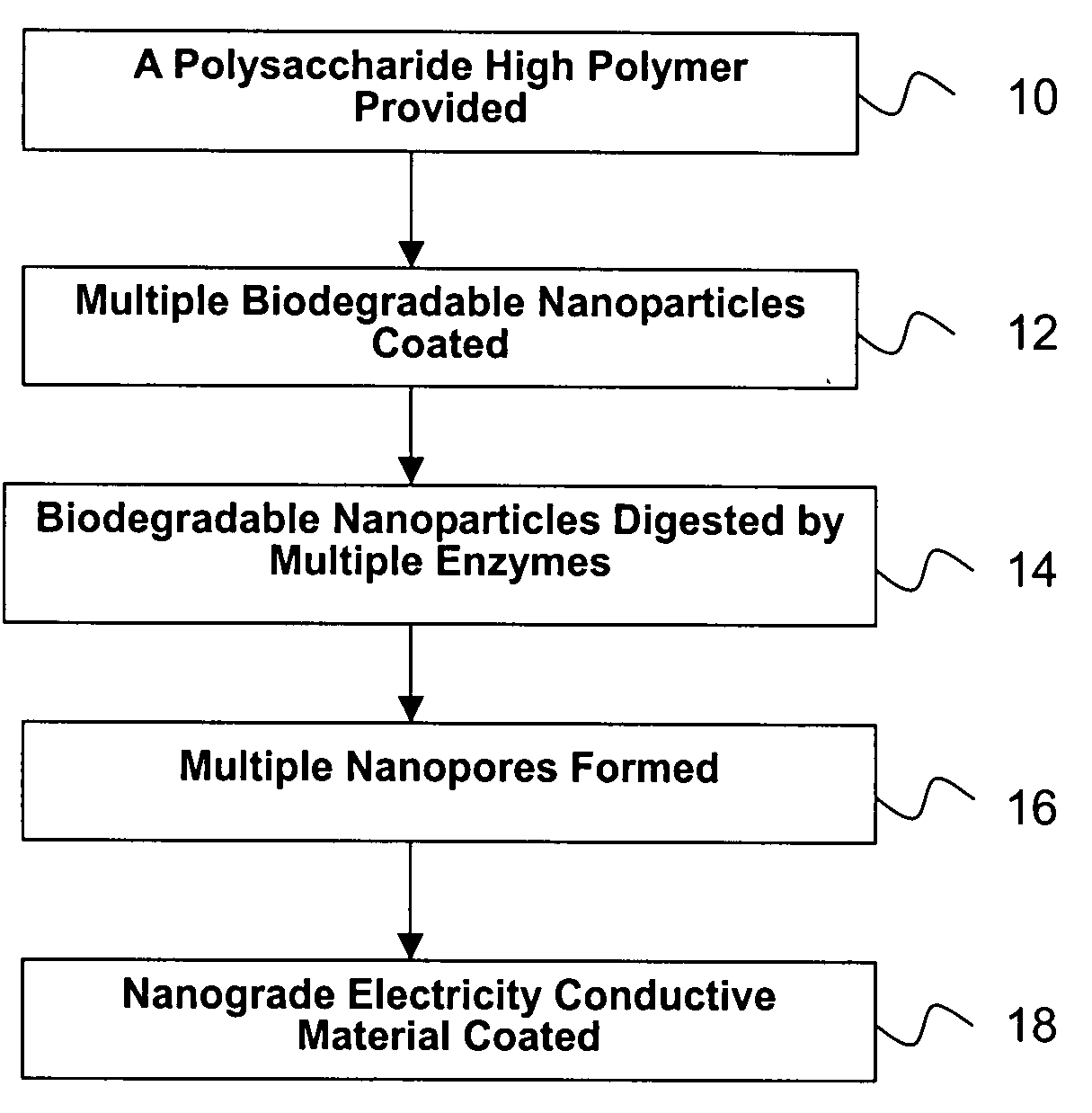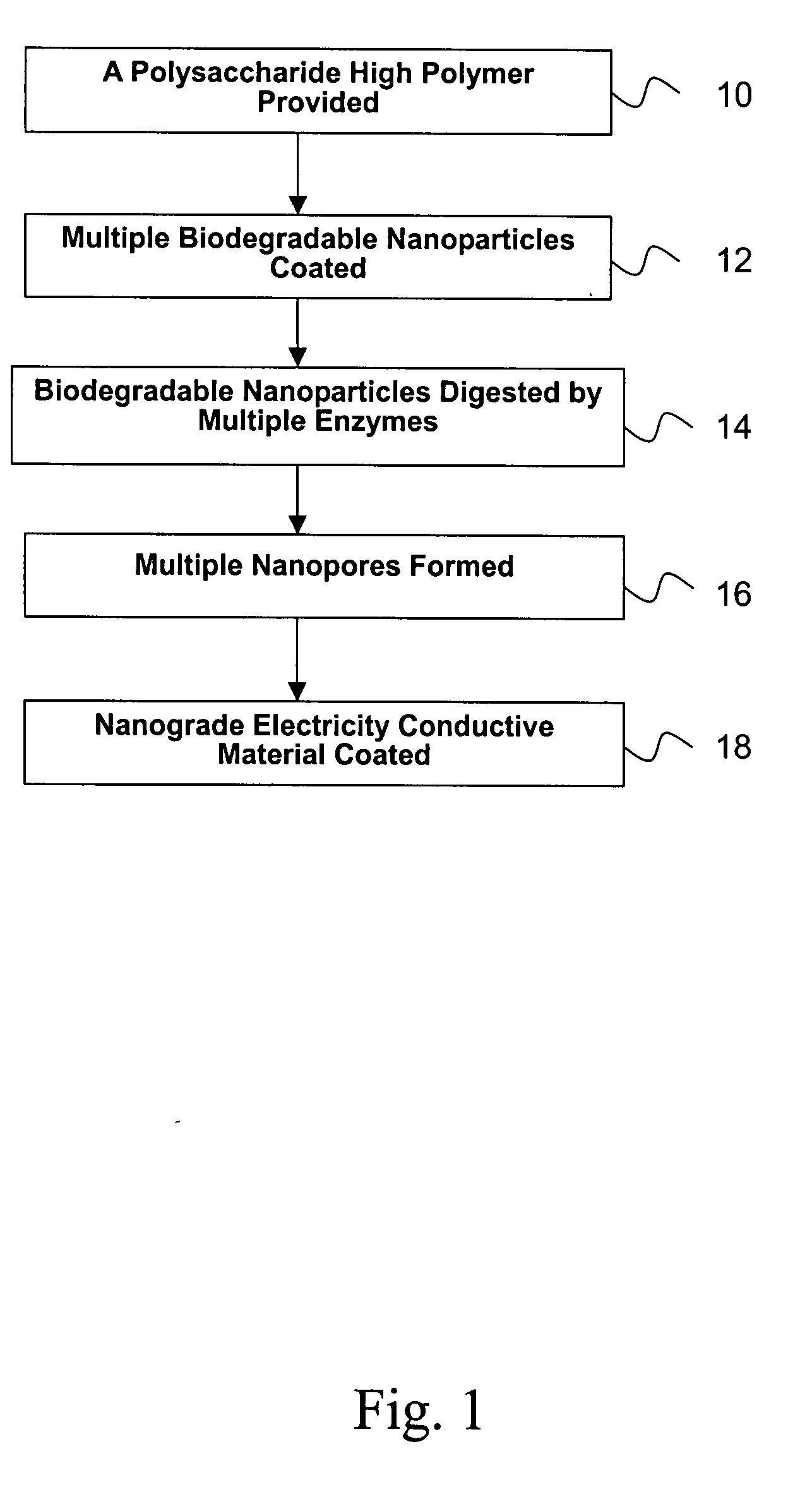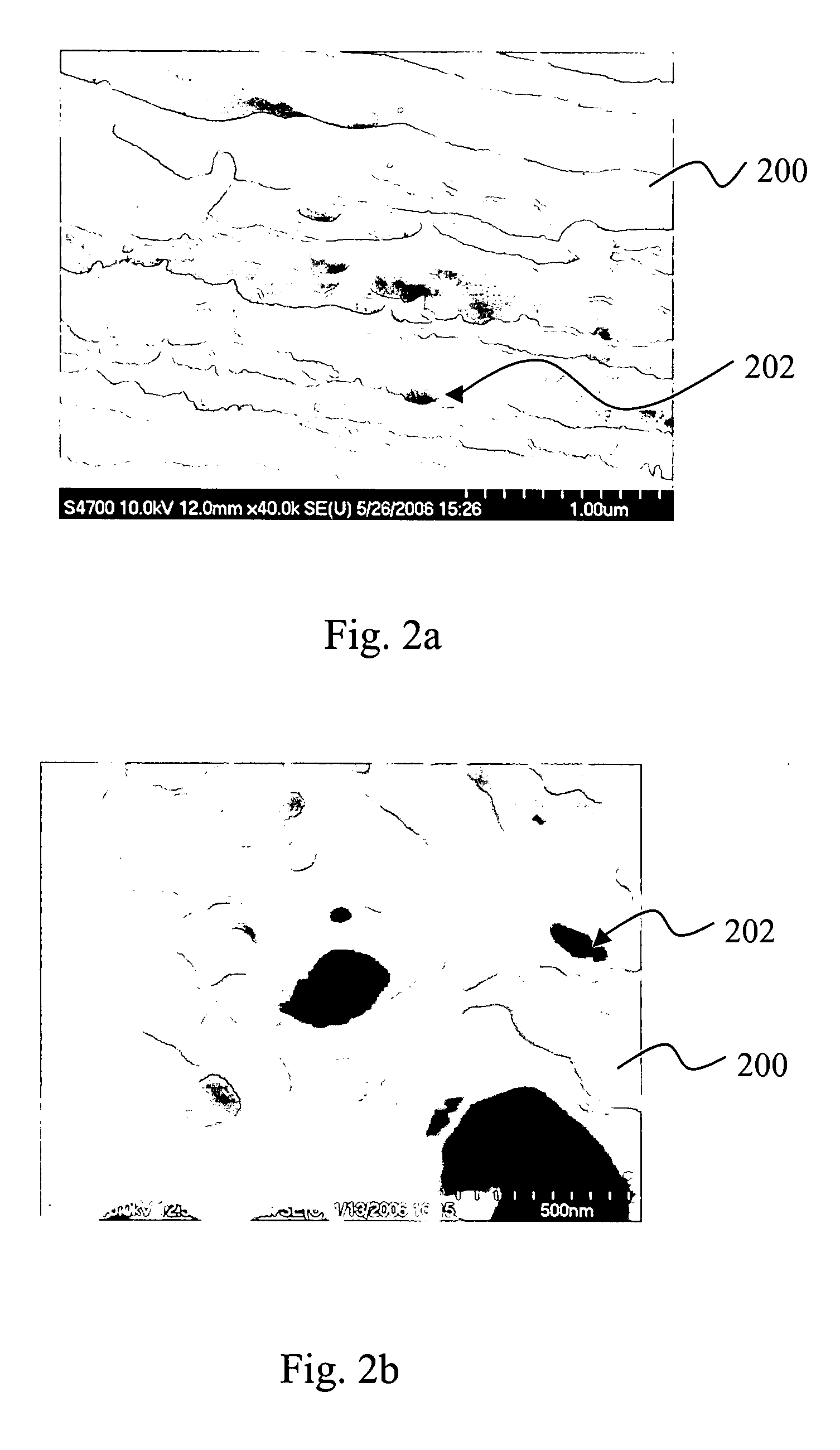Biodegradable material with nanopores and electric conductivity and the fabricating method thereof
a biodegradable material and nanopore technology, applied in the field of biodegradable materials, can solve the problems of not reaching the nanometer grade, the application of porous materials characteristics in biodegradable materials limited to micrometer grade has not yet reached the nanometer grade, and the problem of biodegradable materials with nanopores at the same time possessing electric conductivity has not yet been resolved
- Summary
- Abstract
- Description
- Claims
- Application Information
AI Technical Summary
Benefits of technology
Problems solved by technology
Method used
Image
Examples
Embodiment Construction
[0023]A biodegradable material with nanopores of the present invention includes a polysaccharide polymer and multiple nanopores on the polysaccharide polymer.
[0024]Referring to FIG. 1, a flow chart of a fabricating method for a biodegradable material with nanopores is illustrated. As shown in FIG. 1, a polysaccharide polymer is provided (Step 10), and multiple biodegradable nanoparticles, e.g., gelatin nanoparticles, are implanted on the polysaccharide polymer (Step 12). Wherein, regulation for a desired size of the nanopore becomes feasible by selecting a proper size of the biodegradable nanoparticle. Multiple enzymes, e.g. collagenase, are introduced to the polysaccharide polymer to digest and decompose those biodegradable nanoparticles (Step 14); followed by the formation of multiple nanopores on the polysaccharide polymer (Step 16). In a subsequent step, the polysaccharide polymer with nanopores is implanted with a group of nano-grade electrically conductive material (Step 18); ...
PUM
| Property | Measurement | Unit |
|---|---|---|
| Electrical conductivity | aaaaa | aaaaa |
| Size | aaaaa | aaaaa |
| Biodegradability | aaaaa | aaaaa |
Abstract
Description
Claims
Application Information
 Login to View More
Login to View More - R&D
- Intellectual Property
- Life Sciences
- Materials
- Tech Scout
- Unparalleled Data Quality
- Higher Quality Content
- 60% Fewer Hallucinations
Browse by: Latest US Patents, China's latest patents, Technical Efficacy Thesaurus, Application Domain, Technology Topic, Popular Technical Reports.
© 2025 PatSnap. All rights reserved.Legal|Privacy policy|Modern Slavery Act Transparency Statement|Sitemap|About US| Contact US: help@patsnap.com



